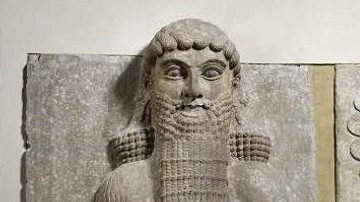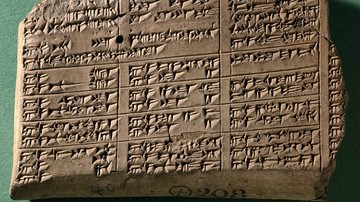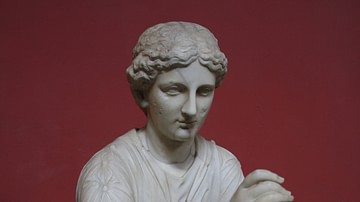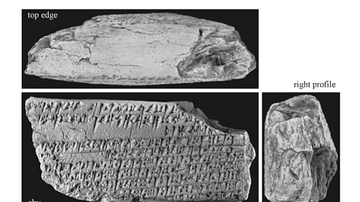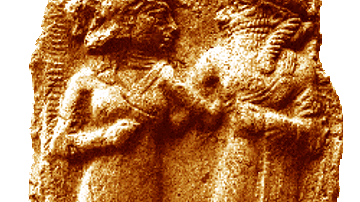Surpassing all other kings, heroic in stature,
brave scion of Uruk, wild bull on the rampage!
Going at the fore he was the vanguard,
going at the rear, one his comrades could trust!
(Prologue, Tablet I, The Epic of Gilgamesh)
Acquisition
In 2011 CE, the Sulaymaniyah (Slemani) Museum in Iraqi Kurdistan purchased a large number of clay tablets. After the dramatic fall of Saddam's regime on April 9, 2003 CE and the ransacking of the Iraq Museum as well as other museums, the Sulaymaniyah Museum (guided by the Council of Ministers of Iraqi Kurdistan) started an initiative, as part of an amnesty program. The museum paid smugglers to 'intercept' archaeological artefacts on their journey to other countries. No questions were asked about who was selling the relic or where it came from. The Sulaymaniyah Museum believed that this condition kept smugglers from selling their merchandise to other buyers (locally) or antiquities dealers (outside Iraq), as they would have otherwise done so with ease and without any legal consequences.
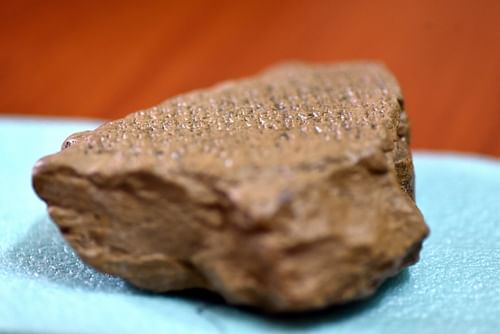
A large cache of clay tablets came from southern Iraq through illegal excavations after April 2003 CE. None of them was looted from the Iraq Museum, as no tablet bore an Iraqi Museum acquisition number, storage number, or even an excavation number. Therefore, their precise provenance remains a mystery. However, sometimes one can apply the 'best guess' conjecture depending on the cuneiform text a tablet has. This proved true occasionally; some scholars were quite sure that some tablets were unearthed in Larsa (modern-day Tell as-Senkereh, in Dhi Qar Governorate, Iraq) by the plunderers.
At that time, luckily present at the museum, professor Farouk Al-Rawi (of the Department of Languages of Cultures of the Near East, SOAS, University of London), immediately spotted that one of the tablets turned out to be Tablet V of the Epic of Gilgamesh; the tablet was transliterated and an article was published about it in June 2014 CE by Al-Rawi and George. Recently Professor Al-Rawi visited the Governorate of Sulaymaniyah in Iraqi Kurdistan to do research about some clay tablets acquired by the Sulaymaniyah Museum. I met him many times and we chatted a lot. Professor Al-Rawi and my dear friend, Hashim Hama Abdullah (the Director of the Sulaymaniyah Museum), told me that Professor Al-Rawi spotted another tablet of the Epic of Gilgamesh (among that cache) and he has completed the transliteration.
![Newly Discovered Tablet II of the Epic of Gilgamesh [Reverse]](https://www.worldhistory.org/img/r/p/500x600/10430.jpg?v=1600401603)
Discovery
In 2011 CE, as part of that large collection of clay tablets, the Sulaymaniyah Museum acquired a small fragment, somewhat triangular in shape. Its final price was about 300 USD after some negotiation. After some cleaning, the overlying cuneiform text became very clear. "It is part of Tablet II of the Epic of Gilgamesh", professor Al-Rawi said. On April 7, 2019 CE, I interviewed him about this tablet and what it conveys.
This surviving fragment is part of a large tablet. The text indicates that the tablet is a fragment of Tablet II of the Epic of Gilgamesh. It is very likely that the original complete tablet had contained the texts of both Tablets I and II, on one large tablet. The way of narration and the cuneiform inscriptions denote that this poem is not part of the so-called Standard Babylonian version, after 1200 BCE; it is part of the so-called Old-Babylonian version, around the reign of Rim-Sin of Larsa, and that would be approximately 1800 BCE (middle chronology).
The short text of this tablet recounts how the sacred temple prostitute, Shamkat (also read Shamkhat, Shamhat or Šamhat), lures and convinces Enkidu to go to the great city of Uruk in order to meet and fight Gilgamesh. A very interesting point professor Al-Rawi made that Enkidu, when addressing Gilgamesh, used to say "Ah Gilgamesh". There are many other points which I cannot disclose because professor Al-Rawi's article has not been published yet. But, this short text displays some differences or variations from other Tablet II's tales.
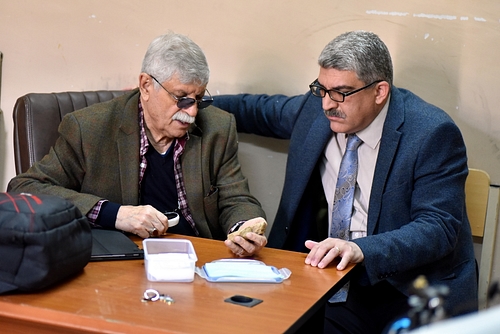
Epic of Gilgamesh
I have read the Epic of Gilgamesh several times. There are a few versions. Two only have been partially reconstructed and therefore are considered the “main” versions:
- The Standard Babylonian (Akkadian) version: This was compiled and edited by Sin-leqi-unninni (around 1200 BCE) and its incipit and prologue start with "He who saw the deep". The twelve tablets of this version were found at the Library of Ashurbanipal II in Nineveh.
- The Old Babylonian version: This is an earlier version than the Standard Babylonian one, which dates back to around 1800 BCE. This version's incipit starts with "Surpassing all other kings".
There are much earlier Sumerian poems, and although these poems may be considered primitive versions of the Standard Babylonian one, they narrate some unrelated tales. Professor Al-Rawi told me that the Sulaymaniyah Museum has one (or very probably two) of these earlier Sumerian poems of the Epic, but they have not been transliterated yet.
Most of the text of the Old-Babylonian version is incomplete because its pertinent tablets are either fragmentary or contain many critical lacunae. The names of those tablets (e.g., Yale Tablet and Pennsylvania Tablet) were coined according to their current location. This newly discovered tablet is part of the “Old-Babylonian version”; how about naming it “the Slemani Tablet”? The Sulaymaniyah Museum is the largest museum in Iraqi Kurdistan and the 2nd largest Museum in Iraq after the Iraq Museum in Baghdad.
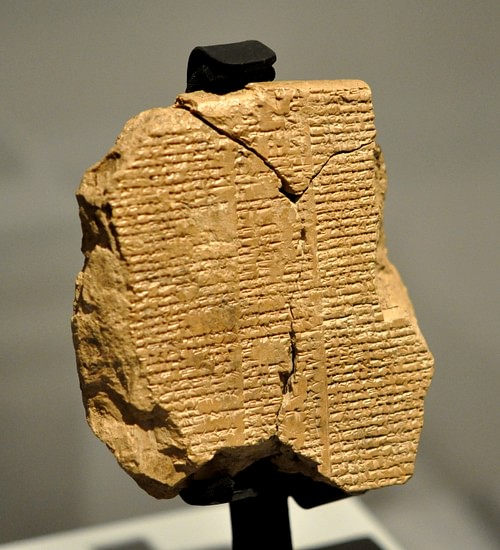
I am very grateful to professor Farouk Al-Rawi for his kind help; without his kind cooperation, this article would have not been published. Special gratitude goes to Mr. Hashim Hama Abdullah, the Director of the Sulaymaniyah Museum for his endless support, as usual. I am also thankful to Miss Nyan Naser Hassan and Mr. Hemin Nuri for their kind help.

